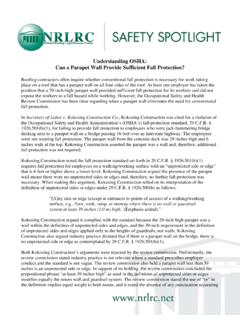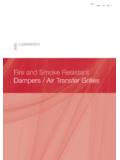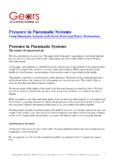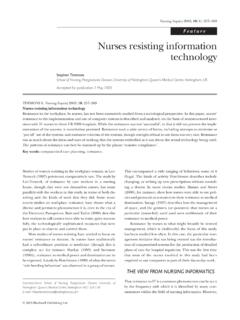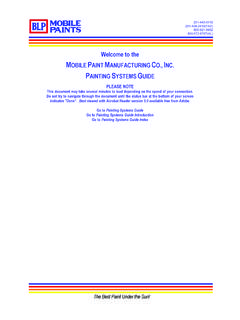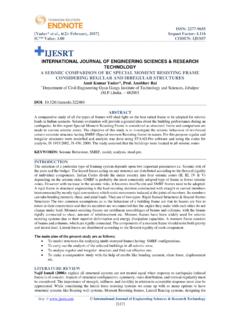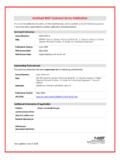Transcription of Understanding OSHA: Correct Use of Warning-line Systems
1 Understanding osha : Correct Use of Warning-line Systems The Occupational Safety and Health Administration ( osha ) allows use of a Warning-line system as a means of fall protection in certain instances. Specifically, for employees engaged in roofing activities on low-slope roofs with unprotected sides and edges 6 feet or more above lower levels, the following methods of fall protection are acceptable: a Warning-line system and guardrail system ; a Warning-line system and safety net system ; a Warning-line system and personal fall-arrest system ; or a Warning-line system with a safety-monitoring system . osha will consider use of a Warning-line system alone only a de minimis violation of the standard if the following are met: the warning line is used 15 feet or more from the edge; the warning line meets or exceeds osha s setup requirements; no work or work-related activity will take place between the edge and the warning line; and a rule is implemented prohibiting employees from going past the warning line.
2 When warning lines will be used as a means of fall protection on a roofing project, osha imposes certain requirements on construction employers, pursuant to 29 (f) and its subparts. Foremen and superintendents need to ensure a proper Warning-line system setup. Warning-line Systems consisting of ropes, wires or chains and supporting stanchions should be set up as follows: The warning line must be erected around all sides of the roofing work area. Determine if mechanical equipment will be used for the work. If so, the warning line must be erected no less than 6 feet from the roof edge parallel to the direction of the mechanical equipment s operation and no less than 10 feet from the roof edge perpendicular to the direction of the mechanical equipment s operation.
3 If mechanical equipment is not being used, the warning line must be erected no less than 6 feet from the roof edge. Employees who are not performing roofing work in the designated work area must remain outside the work area between the roof edge and the warning line. Points of access, material-handling areas, storage areas and hoisting must be connected to the work area by an access path formed by two warning lines. When these areas are not in use, a warning line must be placed across the path at the point where the path intersects the warning line erected around the work area, or the path must be offset in a manner that a person cannot walk directly into the work area. All warning lines must be flagged with high-visibility material at no more than 6-feet intervals.
4 Warning lines must be rigged and supported so the lowest point (including sag) is no less than 34 inches from the walking/working surface and the highest point is no more than 39 inches from the walking/working surface. After being rigged with warning lines, stanchions shall be capable of resisting (without tipping over) a force of at least 16 pounds applied horizontally against the stanchion, 30 inches above the walking/working surface perpendicular to the warning line and in the direction of the floor, roof or platform edge. The rope, wire or chain serving as the warning line must have a minimum tensile strength of 500 pounds and, after being attached to the stanchions, must support (without breaking) the load applied to the stanchions.
5 Warning lines must be attached to each stanchion in such a way that pulling on one section of the line between stanchions will not result in slack being taken up in the adjacent section before a stanchion tips over.


